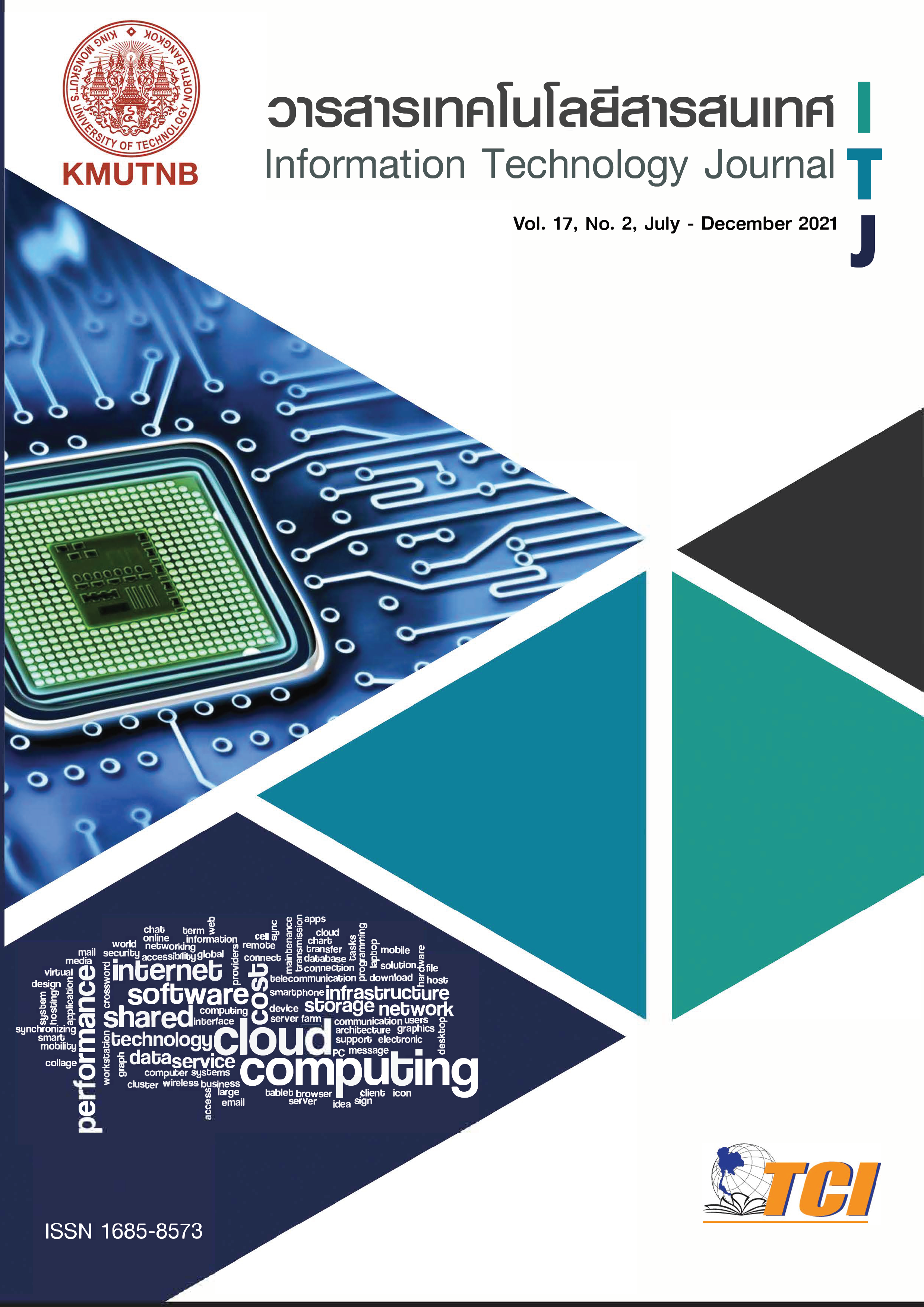Interesting Attributes of Student Performance Using Machine Learning Models Based on Family and Educational Backgrounds in the Faculty of Agriculture and Technology at Rajamangala University of Technology Isan
Main Article Content
Abstract
This research studied used six machine learning models to predict student performance and studied interesting attributes that cause influence students to achieve their degree based on their family background and background studies. The student’s data was obtained from Education service system (ESS) of University using data that was collected the last 5 years, and used five machine learning models to predict the student performance. Results had been clearly showed that the data related to student’s family collected in ESS is was not sufficient for accurate prediction, while student grades, course learning and their study location during high school is was a distinguishing feature caused influencing students to achieve their degrees. Additionally, the best accuracy result was Random forest which can predicted an accuracy of 0.62, while the other models did not show satisfactory results. The results of this research may enable the faculty to develop an improved database to predict student performance and promote faculty resource management.
Article Details
References
“Rmuti ESS.” Available Online at http://ess.surin. rmuti.ac.th/Rmuti/Registration/Account/Login.aspx, accessed on 27 December 2020.
U. Bin Mat, N. Buniyamin, P. M. Arsad, and R. Kassim, “An overview of using academic analytics to predict and improve students’ achievement: A proposed proactive intelligent intervention,” 2013 IEEE 5th Conference on Engineering Education (ICEED), pp. 126–130, 2013.
A. Venezia, P. M. Callan, J. E. Finney, M. W. Kirst, and M. D. Usdan. The Governance Divide: A Report on a Four-State Study on Improving College Readiness and Success. National Center Report# 05-3. Natl. Cent. Public Policy High. Educ, 2005.
A. Slim, G. L. Heileman, J. Kozlick, and C. T. Abdallah, “Predicting student success based on prior performance,” 2014 IEEE Symposium on Computational Intelligence and Data Mining (CIDM), pp. 410–415, 2014.
T. Ojha, G. L. Heileman, M. Martinez-Ramon, and A. Slim, “Prediction of graduation delay based on student performance,” 2017 International Joint Conference on Neural Networks (IJCNN), pp. 3454–3460, 2017.
J. B. Hansen, Student Performance and Student Growth as Measures of Success: An Evaluator’s Perspective. 2000.
Y. Beaumont-Walters and K. Soyibo, “An analysis of high school students’ performance on five integrated science process skills,” Research in Science & Technological Education, Vol. 19, No. 2, pp. 133–145, 2001.
S. T. Hijazi and S. M. M. Naqvi, “Factors Affecting Student’s Performance.,” Bangladesh e-journal Sociol., Vol. 3, No. 1, 2006.
B. Sacerdote, “Peer effects with random assignment: Results for Dartmouth roommates,” Q. J. Econ., Vol. 116, No. 2, pp. 681–704, 2001.
G. R. Goethals, “Peer Effects, Gender, and Intellectual Performance among Students at a Highly Selective College: A Social Comparison of Abilities Analysis. Discussion Paper.,” 2001.
D. M. D. Angeline, “Association rule generation for student performance analysis using apriori algorithm,” SIJ Trans. Comput. Sci. Eng. its Appl., Vol. 1, No. 1, pp. 12–16, 2013.
M. M. N. Quadri and N. V Kalyankar, “Drop out feature of student data for academic performance using decision tree techniques,” Glob. J. Comput. Sci. Technol., 2010.
E. Osmanbegovic and M. Suljic, “Data mining approach for predicting student performance,” Econ. Rev. J. Econ. Bus., Vol. 10, No. 1, pp. 3–12, 2012.
W. Hämäläinen and M. Vinni, “Comparison of machine learning methods for intelligent tutoring systems,” International Conference on Intelligent Tutoring Systems, pp. 525–534, 2006.
T. M. Christian and M. Ayub, “Exploration of classification using NBTree for predicting students’ performance,” 2 014 International Conference on Data and Software Engineering (ICODSE), pp. 1–6, 2014.
V. O. Oladokun, A. T. Adebanjo, and O. E. Charles-Owaba, “Predicting students academic performance using artificial neural network: A case study of an engineering course,” 2008.
B. A. Sherke et al., “Do Blood Groups Determine Academic Performance in Medical Students? A Cross Sectional Study,” Int. J. Physiol., Vol. 6, No. 3, pp. 66–71, 2018.
R. K. Sharma, “Effect of Blood Group on Academic Achievement of Secondary Students in Mathematics,”
J. Teach. Educ. Res., Vol. 13, No. 02, pp. 91–99, 2018.
A. Gamoran and D. A. Long, “Equality of educational opportunity a 40 year retrospective,” International studies in educational inequality, theory and policy, Springer, pp. 23–47, 2007.
J. E. Cheadle, “Educational investment, family context, and children’s math and reading growth from kindergarten through the third grade,” Sociol. Educ., Vol. 81, No. 1, pp. 1–31, 2008.
C. Fang and X. Feng, “Family background and academic achievements: a study of stratum differences in compulsory education,” Zhejiang Soc. Sci., Vol. 24, No. 8, pp. 47–55, 2008.
Z. Sun, Z. Liu, and B. Sun, “Family, school, and children’s academic achievements—based on the study of rural areas in Gansu Province,” J. Beijing Norm. Univ. (Social Sci. Ed.), Vol. 37, No. 5, pp. 103–115, 2009.
C. Romero, S. Ventura, P. G. Espejo, and C. Hervás, “Data mining algorithms to classify students,” 2008.
A. M. Shahiri and W. Husain, “A review on predicting student’s performance using data mining techniques,” Procedia Comput. Sci., Vol. 72, pp. 414–422, 2015.
S. Kotsiantis, C. Pierrakeas, and P. Pintelas, “Predicting Student’s Performance in Distance Learning using Machine Learning Techniques,” Appl. Artif. Intell., Vol. 18, No. 5, pp. 411–426, 2004.
N. Thai-Nghe, L. Drumond, A. Krohn-Grimberghe, and L. Schmidt-Thieme, “Recommender system for predicting student performance,” Procedia Comput. Sci., Vol. 1, No. 2, pp. 2811–2819, 2010.
P. Cortez and A. M. G. Silva, “Using data mining to predict secondary school student performance,” 2008.
Y. Abubakar and N. B. H. Ahmad, “Prediction of students’ performance in e-learning environment using random forest,” Int. J. Innov. Comput., Vol. 7, No. 2, 2017.
M. T. Uddin and M. A. Uddiny, “A guided random forest based feature selection approach for activity recognition,” 2 015 International Conference on Electrical Engineering and Information Communication Technology (ICEEICT), pp. 1–6, 2015.


